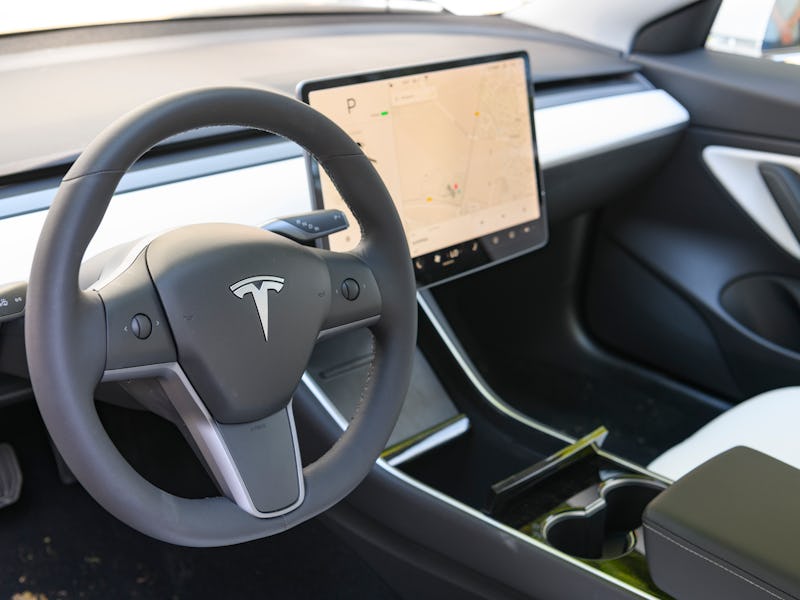Tesla full self-driving release date: AI Day reveals a crucial step forward
Tesla made a slew of big announcements at its artificial intelligence event. Here's what it means for the full self-driving car.

“What we want to show today is that Tesla is much more than an electric car company,” CEO Elon Musk told the audience at the company’s highly-publicized artificial intelligence event on August 19.
But while the event outlined bold promises for super-smart systems — Tesla robot, anyone? — it’s still the autonomous car project that will most interest Tesla drivers. For the past five years, the company has shipped vehicles with what it claims are the necessary sensors to one day enable point-to-point hands-free driving.
After Tesla’s A.I. event, that vision seems closer than ever. But for a company that promised a cross-country autonomous drive demonstration in 2017 only for Musk to admit by February 2018 that Tesla “missed the mark,” it’s understandable if some people remain skeptical.
The event sent a message. Tesla’s full self-driving development is more advanced than ever. It’s built up more computing power than ever. And next year, it’s set to get a whole lot more advanced.
What’s less clear is what that actually means for a release date.
Want to find out more about the latest in the world of Tesla? Subscribe to MUSK READS+ for exclusive interviews and analysis about all things Musk.
Tesla A.I. Day: What it means for full self-driving
Tesla will use artificial intelligence, running on an in-car computer, to power its final full self-driving feature.
It will do this through four steps:
- Take input from the eight cameras fitted around the car.
- Use that to create the “vector space,” a 3D model of the surrounding world that includes objects’ positions, depths, velocities, and other features. This is built using what’s called a “neural network.”
- Pass the “vector space” onto a series of planners. This is designed to take the model and get the car to its destination. It’s designed to maximize safety, comfort, and efficiency.
- These plans are converted into steering and acceleration commands for the car and executed.
Tesla's diagram for how full self-driving will work.
When Andrej Karpathy, Tesla’s head of A.I., first started four years ago, the company used a neural network to drive the car along a single highway lane. The system worked to detect objects like traffic lights and curbs and used that information to make a decision. Karpathy explained that this simplified version worked for single highway lane driving, but more complicated tasks required a 3D model like the one described above.
How does Tesla develop its full self-driving A.I.?
Tesla needs a lot of data to train its full self-driving A.I.. It needs images and videos from real-world driving, labels to show the system which objects are present in these videos, and a training system to teach the A.I. how to react to those labels within the vector space.
Originally, Tesla took images from vehicle cameras and manually labeled them by drawing over the image. It then switched to a “four dimension” approach where it would label the objects in the 3D-generated vector space. This new approach simultaneously labeled the object across all cameras at once, increasing throughput 100-fold.
But even Tesla’s 1,000 person team isn’t enough to provide the necessary training data. It has started using auto-labeling, taking data from engineer or customer cars and sending that over to Tesla’s servers. This enabled Tesla to automatically collect and label 10,000 clips in one week.
Tesla's autonomous car labeling system in action.
As of 2021, Tesla has more than 10,000 graphics processing units currently working on this A.I. problem: 1,752 auto-labeling units, and 9,792 units for training. In terms of numbers of units, it’s more than the top five supercomputers in the world.
To develop its neural network capabilities further, Tesla is developing the “Dojo” supercomputer. This machine uses the Tesla-designed D1 chip, which features 50 billion transistors and is specifically designed for training neural networks.
The chips are used to build the fastest A.I. training computer. At the same cost, it will offer 1.3 times better performance per watt, four times better performance, and five times smaller footprint.
When will Tesla release full self-driving?
We still don’t know.
Tesla first started rolling out its full self-driving feature to beta testers in October 2020. On August 23, Musk teased on Twitter that a “much improved” beta is on the way.
Musk's Twitter post.
During the event, Musk explained that Tesla will have its Dojo supercomputer operational next year. It will be used for training full self-driving videos.
Musk also mentioned that the currently shipping “Hardware 3” computer, fitted inside Tesla vehicles, should be powerful enough to run complete full self-driving software. Despite that, he said that a “Hardware 4” system will be introduced with the Cybertruck in around a year. This new computer will offer about four times more capability.
But for now, it may be almost impossible to predict when hands-free full self-driving will release to the general public. It would require regulatory approval, which means regulators would need to be confident that they can trust the system. That means “chasing nines,” as it’s known in the automous car world: perfecting the system so it works in almost every case it comes across.
Earlier this month, the U.S. National Highway Traffic Safety Administration announced it will investigate the existing semi-autonomous Autopilot feature in relation to 11 crashes — approval seems a distant dream in this context.
But as Musk alluded to near the end, the event was more about speeding up progress.
“There’s just a tremendous amount of work to do to make it work,” he said. “So that’s why we need talented people to join in and solve the problem.”
SUBSCRIBE TO MUSK READS+, A PREMIUM NEWSLETTER THAT COVERS THE WORLDS OF ELON MUSK, SPACEX, TESLA, AND EVERYTHING BETWEEN.
This article was originally published on